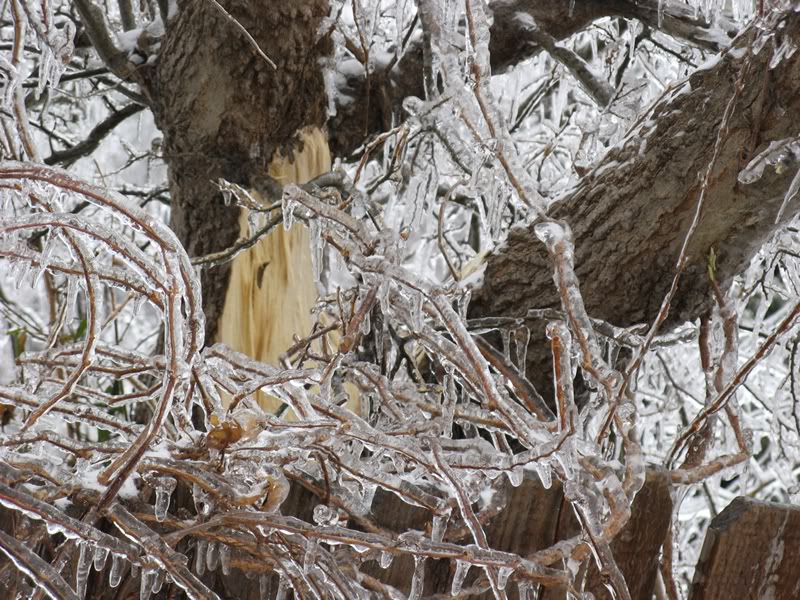This is a guest post by my friend Janet Wendland who lives in Kansas and had first hand experience with enduring natural disasters.
The weather in Kansas can be brutally extreme, from blizzards and subzero temperatures in winter to severe thunderstorms with damaging winds, hail and flooding in the summer.
People living here are quite pragmatic about those events and are probably more prepared than most to deal with emergency conditions. It is normal to keep a winter emergency kit in your car, to keep the ice melted and a snow shovel handy.
Year-round, most of us have an emergency stock of bottled water, non-perishable foods, candles, lanterns, and battery operated flashlights and radios handy. This said, I don’t believe anyone was totally prepared for the devastating ice-storm that we experienced in December.
On December 11th, rain started falling mid-afternoon. The temperature was in the 40’s and we were glad to get the much needed rainfall. The rain continued, and by mid-evening freezing rain and temperatures fell into the 20’s. The freezing rain accumulated on trees, power lines, streets and sidewalks.
After going to bed, it was eerie to see green sparks and strobe light effects flashing outside as the neighborhood power lines were stretched and arcing. The night sounds were eerie too as I could hear the trees groaning under the weight of the ice and then the snapping of branches.
When I awakened, the neighborhood looked like a war zone with full-grown trees toppled and strewn everywhere. Trees and limbs continued to moan, snap and topple during the day. Many trees fell on power lines and caused wide-spread power outages. Others falling trees pulled electric boxes off houses and caused numerous house fires. Some power lines, though downed, were still live and caused fire dangers.
I was very fortunate as I only sustained minor damage to the guttering on my house from falling limbs and only lost power for about four hours. Many people suffered major loses when limbs fell
through roofs, broke windows or fell on vehicles. Much of the town was without power for 4-12 days.
Few individuals own emergency generators and so warming shelters were opened at various locations around town and were soon filled to capacity. Churches took names of people willing to open their homes to neighbors and acted as liaisons in getting people sheltered.
Once electricity was restored, people were able to return to their homes, the cleanup began. The food in refrigerators and freezers had spoiled, house plants had frozen, and some water lines had burst. Much electrical equipment was ‘fried’ from the sporadic power surges.
This experience has made me consider how to hone my personal emergency plan and be better prepared.
Here are some changes I am making:
- I have a working, although unused, pot-bellied stove and have made an appointment with the chimney sweep so that I can use it, if needed, without it being a fire hazard.
- I have reread my homeowner’s insurance policy, and now know that I should take photos of the food I might discard as my policy will pay for the replacement.
- I have also purchased a manual can opener and will be able to open and eat the canned goods most of us have in stock.
- I’ve learned how to manually release and open the garage door.
- I now know where the main water shutoff is located.
These are a few new simple steps that have created a new peace of mind.

